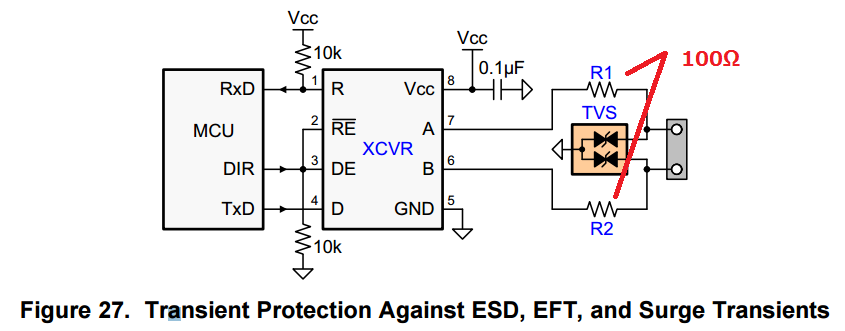Hi, I have been using the MAX485 IC break-out that most Arduino noobs like myself encounter. As you can see in the schematic all the IC inputs (D, DE, RE, R) have 10K pull-ups. I connect DI to TX, and RO to Rx of serial uart pins of my Arduino, and some other random digital pin is connected to DE and RE : OUTPUT LOW to enable driver, and OUTPUT HIGH to enable receiver.
I don't understand why the pull-ups are necessary, or at least present on the break-out board. I want to use TI chip SN75HVD07 which has the same SOIC8 pin-out as the MAX485 chip but I don't know if the pull-ups should be used or not. I notice in another recent post on this forum "SN65HVD10 TVS Application" that his schematic has a pull-up on D, but pull-downs on all the rest. See below:
Can someone advise me as how to implement the SN75HVD07 chip in regards to pull-up/down resistors if I connect the inputs to the serial Tx/Rx pins on my arduino?
FYI, I want to use the SN75HVD07 chip because I have an application that needs over 100 drops on several kilometers of telephone cable. I think this chip requires less fail safe loading than the max485, if any at all, and thus I will be able to get the number of drops I need. Also, It appears to me that the 07 chip is the low slew rate version of the family which would be most tolerant of the crappy cable. I don't mind slow transmission rates because I don't have much to say, and it's necessary any way because of the extreme cable length. As in "old mates" schematic below, I would also like the extra protection of a TVS diode array, (with 10Ohm resistors of course), but don't know if the extra 75pF per drop, and 10Ohm resistors will impinge on me being able to have more than 100 drops on the bus. Any one kind enough to impart their wisdom? Cheers, Matt.



